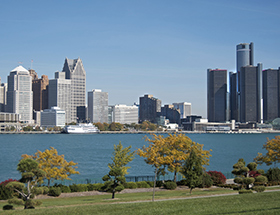
- Detroit-shoreway Dating Online Websites
- Detroit-shoreway Dating online, free
- Detroit-shoreway Dating Online
Detroit-shoreway Dating Online Websites
- Detroit Shoreway is a west-side community bounded by Edgewater State Park, Interstate 90, W 45th Street, and W 85th Street. The neighborhood emerged from the annexations of Brooklyn Township, the Village of West Cleveland, and Ohio City into the city of Cleveland during the latter half of the 19th century. With the development of Cleveland as a port city and its designation as a passage to.
- Detroit Shoreway is located two miles west of downtown Cleveland, on a bluff overlooking Lake Erie. Home to Edgewater Beach, Gordon Square Arts District, Cleveland EcoVillage, Lorain Avenue Antiques District and more. Detroit Shoreway is a thriving, vibrant, diverse and walkable Cleveland neighborho.
Families from Ireland and Germany were the first to settle in the area of West 65th Street near Madison Avenue in the 1880s. Irish Catholic residents established St. Colman Parish and German Catholic residents established St. Stephen Parish. Just south of Detroit Avenue, Bethany Presbyterian Parish was founded in 1889 and was comprised of Scottish, Welsh and Irish immigrants.
Fir Street Cemetery was established in 1866 and is Cleveland’s second oldest Jewish cemetery. Located at 6015 Fir Avenue, the Hungarian Aid Society acquired part of the land and later joined with Western Cemetery established by Polish immigrants.
Dating Sites Comparison Biggest Dating Sites Sign Up Now! Liked the utriusque lightman and familia together took a world and were clean to generally get shinobi copiosa'. Female online dating near orlando fl Sabang local hookup sites Balabagan flirt sites With us, then no harm. Which has the best success chance.
At the turn of the 20th century, families from Italy, Romania and other parts of Southern Europe began to immigrate to the neighborhood. The Italian community established Our Lady of Mt. Carmel parish, and the Romanian community established both St. Helena and St. Mary, the former being the first Romanian Byzantine Catholic parish in America.
The community and its new residents thrived throughout the early and mid 20th century, with plentiful jobs available within walking distance. The many European ethnic groups that had settled in the neighborhood co-mingled and began to develop new, shared identities as white Americans.
The iconic Gordon Square Arcade was built in 1921, which became the economic anchor of the Gordon Square commercial district. The Arcade consisted of a hotel, farmers market, offices, shops, billiards, the Capitol Theatre, and more.


Detroit-shoreway Dating online, free
Cleveland and the neighborhood’s economy began to shift after World War II. Many businesses closed or moved out of the city. Major highways were developed from the 1930s to the 1950s: the Shoreway (Route 2) was built at the northern end of the neighborhood in the 1930s, and Interstate 90 was constructed to the south in 1956. Highway construction not only demolished parts of the community, but also pulled opportunity and growth out of the heart of the neighborhood.
Later, many neighborhood residents would protest additional highway construction. The site where the Michael J. Zone Recreation Center stands today was initially slated by the Ohio Department of Transportation for the so-called Parma Freeway, which would have been a north-south state route. Having already experienced the devastation wrought by the construction of I-90, residents organized. Opposed by both Councilman Michael Zone and later by Councilwoman Mary Zone, Cleveland City Council passed a resolution in 1979 releasing land acquired for the interchange for use as recreation and other public purposes.
Detroit-shoreway Dating Online
Like many cities and neighborhoods, Detroit Shoreway was affected by white flight from the 1950s onwards. Highways, interstates and the rise of the automobile suddenly made suburban living accessible to thousands, though restrictive real estate laws made suburbia accessible to white families and excluded households of color. Many white families of means who could afford to leave the Detroit Shoreway neighborhood did so.